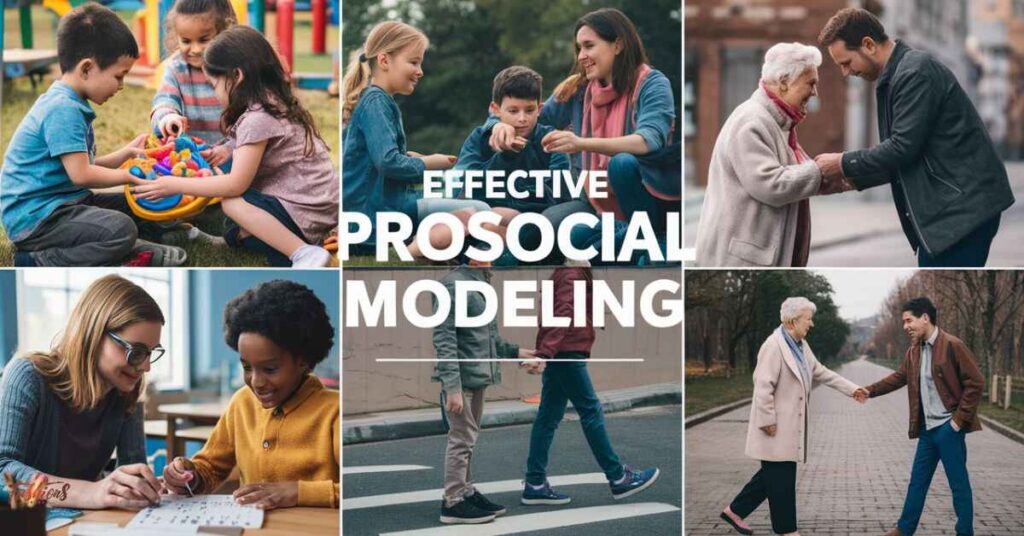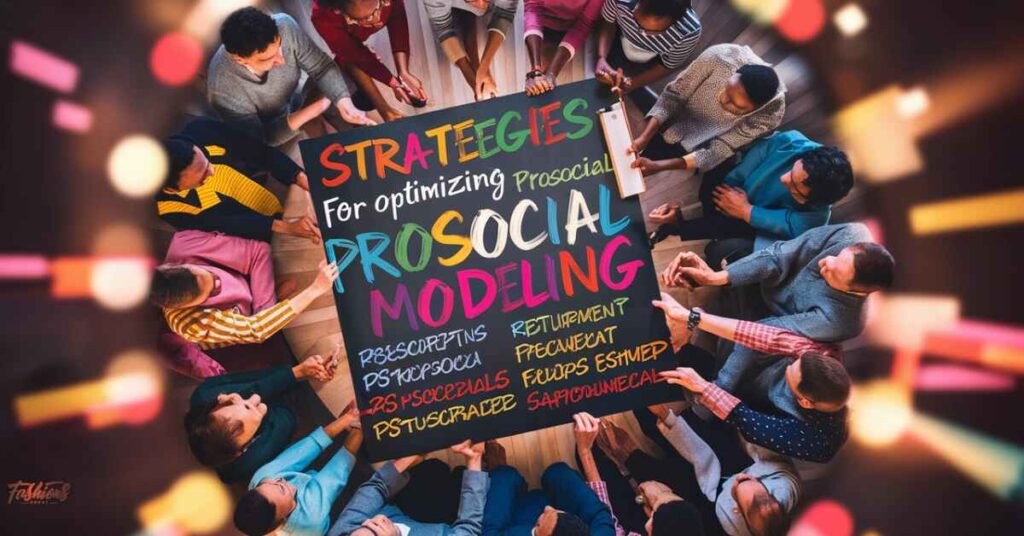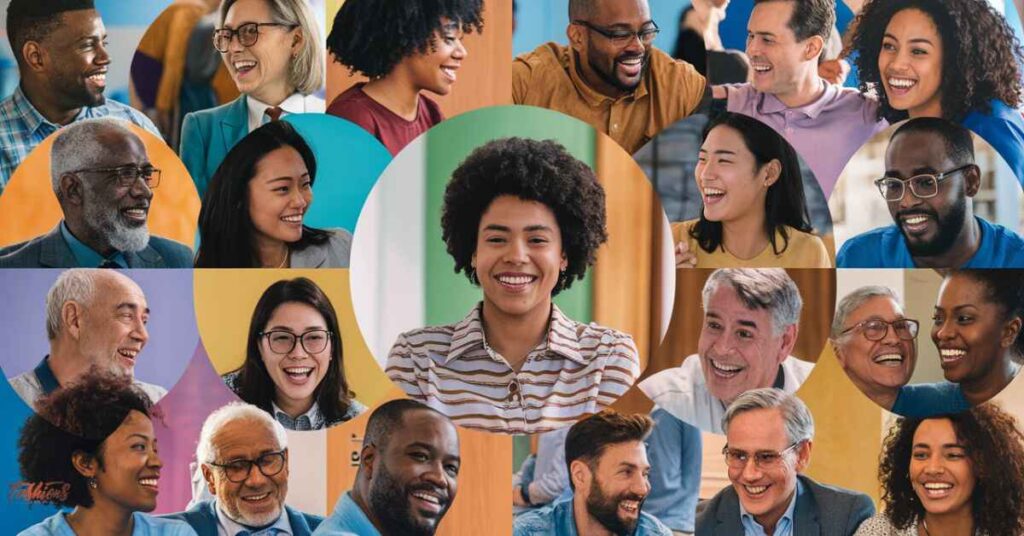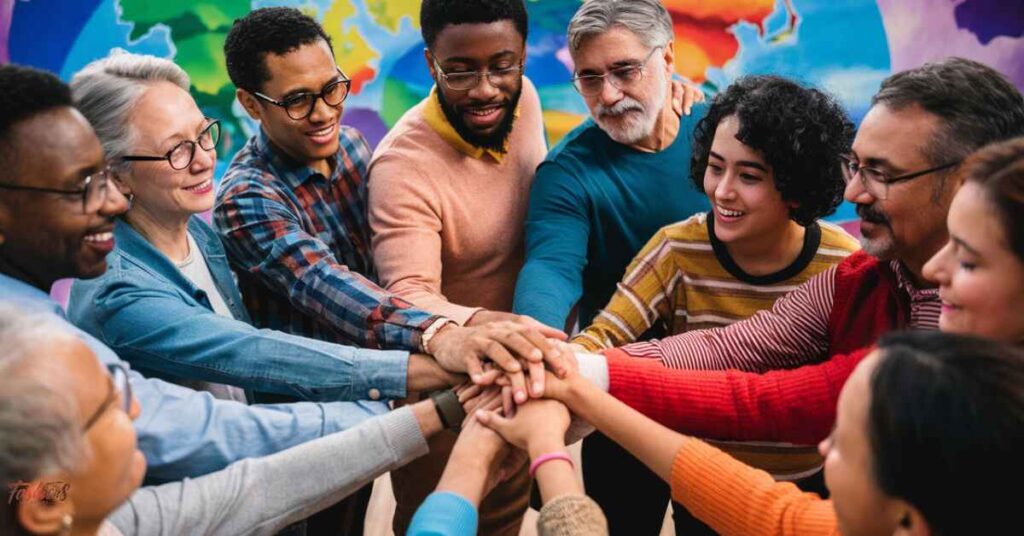In today’s complex societal landscape, fostering positive behavior change is crucial for individual well-being and community harmony. Prosocial modeling is a potent tool, showing how observing and imitating positive behaviors can lead to meaningful transformations.
It highlights the impact of empathy, cooperation, and kindness in fostering positive social change. Let’s delve into the depths of prosocial modeling and explore when it shines brightest in driving behavior change.
What is Prosocial Modeling?
Prosocial modeling encompasses the process of individuals observing and replicating positive actions displayed by others. It goes beyond mere imitation, emphasizing the reinforcement of pro-social values and behaviors to elicit similar responses in observers.
The Role of Context: How Setting Impacts Modeling
The context in which prosocial modeling occurs significantly influences its effectiveness. Different settings, such as educational environments, family dynamics, workplaces, and community programs, provide unique contexts that shape the observation, imitation, and reinforcement of prosocial behaviors. For example:

- In educational settings, the presence of supportive teachers and a cooperative classroom atmosphere can enhance prosocial modeling among students.
- Within families, positive role modeling by parents and caregivers can have a profound impact on children’s development of prosocial behaviors.
- In workplaces, organizational culture and leadership influence the modeling of teamwork, collaboration, and ethical conduct.
- Community programs that actively promote and showcase prosocial behaviors contribute to a culture of kindness and social responsibility.
Effectiveness Across Different Life Stages
The effectiveness of prosocial modeling varies across different age groups and developmental stages. Factors such as cognitive development, social experiences and peer influence play crucial roles in shaping individuals’ receptiveness to prosocial behaviors:
- Children and adolescents are particularly receptive to prosocial modeling, as they are in the process of learning social norms and behaviors from significant others.
- Adults also engage in prosocial modeling, influenced by their experiences, values, and social networks.
- The impact of prosocial modeling may differ between early childhood, adolescence, adulthood and older age, requiring tailored approaches for each stage.
Personal Motivation
Personal motivation plays a vital role in the effectiveness of prosocial modeling. Internal factors such as values, beliefs, moral principles and intrinsic motivations influence individuals’ willingness to adopt and emulate prosocial behaviors:
- Individuals with a strong sense of empathy, compassion, and altruism are more likely to engage in prosocial modeling.
- Personal experiences, including positive reinforcement for prosocial actions or witnessing the benefits of helping others, can also drive behavior change.
- Motivations for prosocial behaviors may vary based on individual differences, personality traits and life experiences.
External Influences on Modeling
External factors, including social support systems, environmental cues, and peer influence, significantly impact the effectiveness of prosocial modeling:
- Supportive social networks, such as family, friends, colleagues, and community groups, provide encouragement and reinforcement for prosocial behaviors.
- Positive role models within social environments serve as examples and sources of inspiration for others to engage in prosocial actions.
- Cultural norms, societal expectations, and institutional policies also shape the prevalence and acceptance of prosocial behaviors within a given environment.
- Peer influence, including social norms and peer pressure, can either facilitate or hinder prosocial modeling, depending on the group dynamics and values upheld.
Examples of Effective Prosocial Modeling Scenarios
Prosocial modeling in educational settings has a profound impact on students’ behavior and academic performance:

Behavior: Students exposed to prosocial modeling exhibit increased cooperation, empathy, and helpfulness towards peers and teachers.
Academic Performance: Positive behaviors fostered through modeling, such as active participation, collaboration, and problem-solving, contribute to improved academic outcomes.
Classroom Dynamics: A classroom environment that promotes prosocial behaviors creates a supportive and conducive learning atmosphere, enhancing student engagement and motivation.
Promoting Positive Interactions and Emotional Development
Prosocial modeling plays a crucial role in promoting positive interactions and emotional development:
Interpersonal Skills: Modeled prosocial behaviors, such as active listening, empathy, and conflict resolution, enhance positive interactions and communication.
Emotional Intelligence: Observing and emulating emotional regulation, empathy, and understanding leads to enhanced emotional intelligence and social competence.
Healthy Relationships: Prosocial modeling fosters the development of healthy relationships based on mutual respect, trust, and cooperation.
Community Programs
Community programs leverage prosocial modeling to promote social responsibility, cooperation, and civic engagement:
Volunteerism: Modeling altruistic actions inspires community members to engage in volunteer work and contribute to social causes.
Collaborative Projects: Prosocial modeling encourages collaboration among diverse groups, leading to the successful implementation of community projects and initiatives.
Role of Leaders: Community leaders who demonstrate prosocial behaviors serve as positive role models, influencing collective actions and community cohesion.
Prosocial Modeling Effectiveness
The effectiveness of prosocial modeling lies in its ability to:
Inspire Behavior Change: Positive role models inspire others to adopt prosocial behaviors, creating a ripple effect of kindness and cooperation.
Foster Empathy: Observing and practicing empathy through modeling enhances understanding and compassion towards others.
Build Stronger Communities: Prosocial behaviors modeled within communities contribute to social cohesion, resilience, and a sense of belonging.
Address Social Challenges: Prosocial modeling initiatives can address social challenges such as bullying, discrimination, and antisocial behavior by promoting positive alternatives and values.
Read this blog:
How To Get Into Modeling?
Strategies for Optimizing Prosocial Modeling
Here are some strategies for optimizing the prosocial modelling:

Clear Communication of Prosocial Values and Behaviors
Clear communication plays a crucial role in optimizing prosocial modeling:
Articulating Values: Clearly communicate prosocial values such as empathy, kindness, cooperation, and altruism.
Behavioral Expectations: Define specific prosocial behaviors and expectations, providing clarity and guidance for individuals.
Modeling Communication: Demonstrate effective communication skills in expressing prosocial values and behaviors.
Consistent and Positive Reinforcement of Desired Actions
Consistency and positive reinforcement are key strategies for optimizing prosocial modeling:
Reinforcing Behaviors: Consistently reinforce desired prosocial behaviors through praise, recognition, and rewards.
Immediate Feedback: Provide timely and specific feedback to individuals who exhibit prosocial actions, reinforcing their impact.
Reinforcing Environment: Create an environment that consistently promotes and values prosocial behaviors.
Encouragement of Empathy and Understanding
Promoting empathy and understanding enhances the effectiveness of prosocial modeling:
Empathy Development: Encourage individuals to practice empathy by understanding others’ perspectives and feelings.
Modeling Empathy: Model empathetic behaviors and responses in interactions, fostering a culture of understanding and compassion.
Empathy Training: Provide education and training on empathy-building skills to enhance prosocial interactions.
Utilization of Role Models and Peer Influence
Utilizing role models and peer influence maximizes the impact of prosocial modeling:
Positive Role Models: Showcase positive role models who exemplify prosocial behaviors and values.
Peer Modeling: Encourage peer-to-peer prosocial modeling, where individuals learn and emulate behaviors from their peers.
Peer Support: Foster supportive peer networks that reinforce prosocial behaviors and values among peers.
Challenges and Limitations of Prosocial Modeling
These are some challenges faced by the model during prosocial modelling:

Overcoming Resistance to Change
One of the key challenges in prosocial modeling is overcoming resistance to change:
Comfort Zones: Individuals may resist adopting new prosocial behaviors if they are comfortable with existing habits or social norms.
Fear of Judgment: Fear of being judged or misunderstood for displaying prosocial behaviors can hinder behavior change.
Gradual Exposure: Gradual exposure and reinforcement of prosocial actions can help individuals overcome resistance and build confidence.
Dealing with Negative Modeling or Reinforcement
Negative modeling or reinforcement poses challenges in the effectiveness of prosocial modeling:
Impact of Negative Models: Exposure to negative models or reinforcement of antisocial behaviors can counteract prosocial modeling efforts.
Addressing Misconceptions: Clarifying misconceptions and addressing negative stereotypes associated with prosocial behaviors is crucial.
Positive Redirection: Promptly redirecting negative behaviors towards positive alternatives helps mitigate the impact of negative modeling.
Addressing Cultural and Contextual Differences
Cultural and contextual differences require consideration in prosocial modeling efforts:
Cultural Norms: Cultural norms and values may influence the acceptance and prevalence of prosocial behaviors.
Contextual Sensitivity: Tailoring prosocial modeling approaches to diverse cultural contexts ensures relevance and effectiveness.
Inclusive Strategies: Adopting inclusive strategies that respect cultural diversity fosters greater acceptance and participation in prosocial initiatives.
Also read:
What Is Inner Beauty?
Successful Implementations of Prosocial Modeling

Successful prosocial modeling promotes empathy, cooperation and kindness in schools, families and communities. It showcases positive impact across diverse settings:
School Program Promoting Prosocial Behavior Among Students
A well-designed school program can effectively promote prosocial behavior among students:
Curriculum Integration: Integrate prosocial values and behaviors into the curriculum, emphasizing empathy, cooperation and kindness.
Role Modeling: Employ positive role models, such as teachers and peers, who demonstrate prosocial behaviors and values.
Interactive Activities: Engage students in interactive activities, role-playing scenarios, and group projects that encourage prosocial interactions.
Reward Systems: Implement reward systems or recognition programs that reinforce and celebrate prosocial actions and behaviors.
Family Intervention
Family interventions can lead to positive changes in parent-child dynamics through prosocial modeling:
Parent Education: Provide parents with education and resources on prosocial parenting strategies, communication skills and conflict resolution.
Modeling Positive Behaviors: Encourage parents to model prosocial behaviors, such as empathy, active listening and cooperation, in their interactions with children.
Family Activities: Facilitate family activities and discussions that promote prosocial values, teamwork and emotional expression.
Support Networks: Offer support networks, counseling services and workshops to help families navigate challenges and reinforce prosocial dynamics.
Anti-Social Behaviors in Local Neighborhoods
Community initiatives can effectively reduce anti-social behaviors through targeted prosocial modeling:
Community Engagement: Involve community members, leaders, and organizations in promoting prosocial behaviors and addressing antisocial issues.
Awareness Campaigns: Conduct awareness campaigns, workshops, and events that highlight the benefits of prosocial actions and alternatives to antisocial behaviors.
Collaborative Partnerships: Form partnerships with law enforcement, schools, businesses and social services to create a comprehensive approach to reducing antisocial behaviors.
Youth Programs: Develop youth programs, mentorship initiatives and recreational activities that foster prosocial skills, resilience and positive peer influence.
Frequently asked questions
What is the effect of prosocial modeling?
Prosocial modeling has a positive effect on promoting empathy, cooperation and altruistic behaviors by observing and imitating positive actions demonstrated by others.
What is an example of prosocial behavior that is learned by observation?
An example of prosocial behavior learned by observation is a child learning to share toys with others after observing their parents sharing.
What is a real-life example of prosocial modeling?
A real-life example of prosocial modeling is a mentor inspiring their mentee to engage in community service activities by actively participating in such activities themselves.
Which of the following is the best example of prosocial behavior?
The best example of prosocial behavior is helping a stranger carry groceries without expecting anything in return.
What are the factors affecting prosocial behavior?
Factors affecting prosocial behavior include empathy levels, social norms, cultural influences, situational contexts, and individual motivations.
Conclusion
Prosocial modeling is a powerful tool for fostering positive social behaviors, empathy and cooperation. Through observation and imitation of positive actions, individuals can learn and internalize values such as kindness, altruism, and collaboration. Successful implementations of prosocial modeling, whether in schools, families, communities, or workplaces, demonstrate its effectiveness in promoting positive change.
However, challenges such as resistance to change, negative modeling and cultural differences must be addressed for optimal results. Prosocial modeling initiatives leverage clear communication, consistent reinforcement, empathy promotion, and role modeling. They aim to create a more compassionate and harmonious society.







